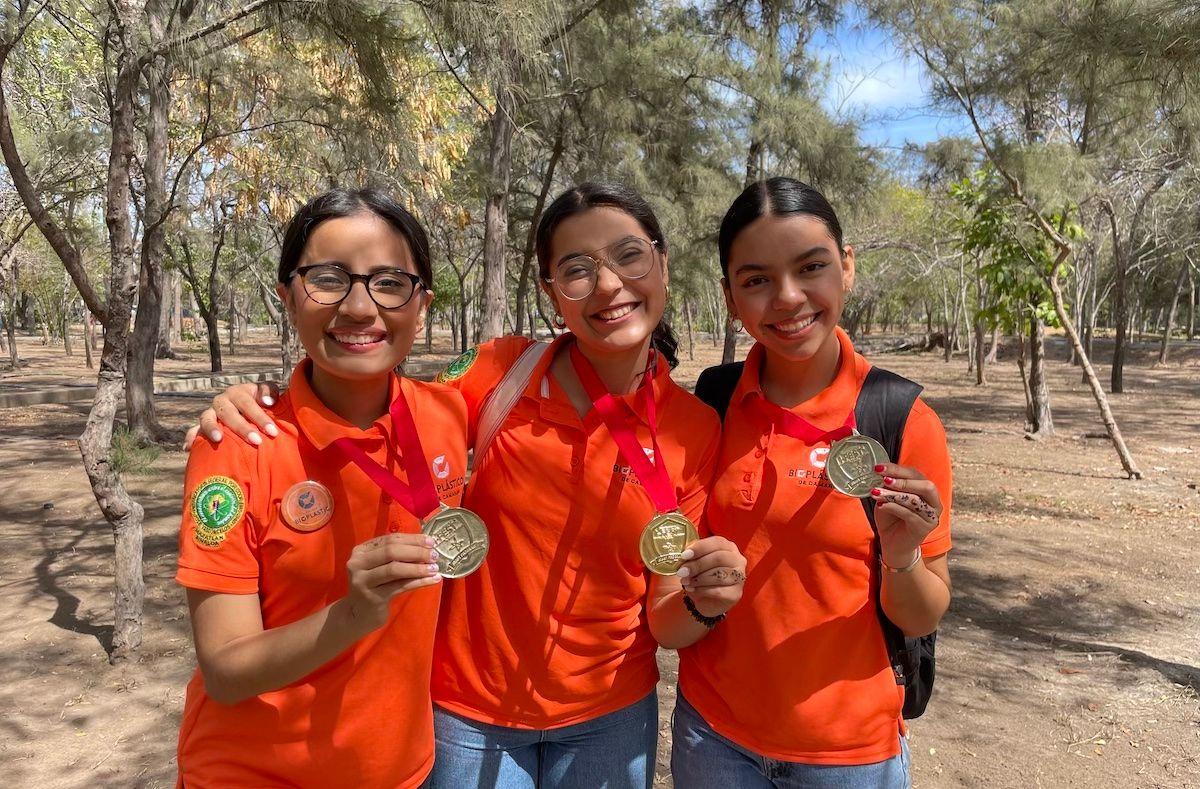Génesis Ayón Loza received recognition for this student project just when he had to decide on a career. In the last year of federal high school, José Vasconcelos called her to become a doctor, as did her colleague Samantha Carrasco. Meanwhile, Nathalia Martínez has gained momentum to become a biotechnology engineer. In any case, one thing is clear to all three of them, converting shrimp shells into bioplastic has shown them a range of options to follow.
Their city of origin, Mazatlán, is the country's epicenter of shrimp capture and export, and the young women were able to identify this crustacean seafood as an opportunity to deploy a summer scientific project that first took them to the Mazatlan Science Expo, then to the National one and then to the Atast Ifest forum in Tunisia, aimed at promoting interest in technological solutions among young people, from which they returned with a medal of first place in the environment category.
A few hours after the trip, during the celebration of the fourth anniversary of the environmental media outlet SonPlayas, they explain their project to this media outlet.
“What we do is rescue all the waste from the shrimp shell, that is, everything we don't consume we process in the laboratory and create plastic,” said Samantha.
When they approached chain restaurants, they saw that many were throwing away the shell, a raw material with which new products can be made. Bioplastics are of extreme interest as an option compared to single-use plastics, which can take between 100 and 1000 years depending on their type to degrade in the environment.
“This bioplastic is not only going to help us, but it's going to help the environment because it can be dumped, it can be to the soil, to the earth as fertilizer or pesticide, so it gives a world of benefits to the human being and also a world of benefits to the environment,” added Samantha.
Towards a patent
At this time, the young women have presented their project as a prototype and are making progress in patenting it. Genesis explains that his bet would be to industrialize the process. Until now, the girls have worked as artisans in the federal high school laboratory, an effort in which they have received the support of the teaching staff, especially Professor Judith Rebeca González.
“If we had the necessary machinery, which is actually quite enough, we could have more products in less time, but the truth is, I feel that it was one of the main challenges,” said the young woman.
Genesis, whose environmental interests are recognized by her colleagues, hopes that this project will serve as a call to action for people and change their habits around the use of plastics. “We plan for this to be done in a big way, really yes, let's plan for it to be something important.”
Supporting youth
Sometimes competing in science prizes is a matter of financial resources. This is known to the girls who list various activities to manage enough travel expenses such as raffling, holding events and getting sponsors.
“I'm going to tell you something very sincere, when we were invited to the National. It seemed incredible to us to see how there was so much Mexican talent from kindergarten who exposed you as a master's degree and you felt stunned, but something very sad that seemed to us was that you went to the parents and they told you, you know that I had to mortgage my car, you know that I had to sell this, you know that they didn't help me, I had to go to the streets to sell bread, I had to go to the streets to boat,” said Nathalia.
Now the young women are planning to attend an international event to be held in Romania, a commitment that will take them down the path of asking for support again.
The three girls did not miss the opportunity to stress the importance of women's participation in science.
“Girls are also in science, girls can also be good at mathematics, we can also do this, because you would have to be in a drawer and when you start to break that drawer it's a matter of breaking it all and continuing upwards, a spark for the cube to reach the moon,” said Nathalia.



Comentarios (0)